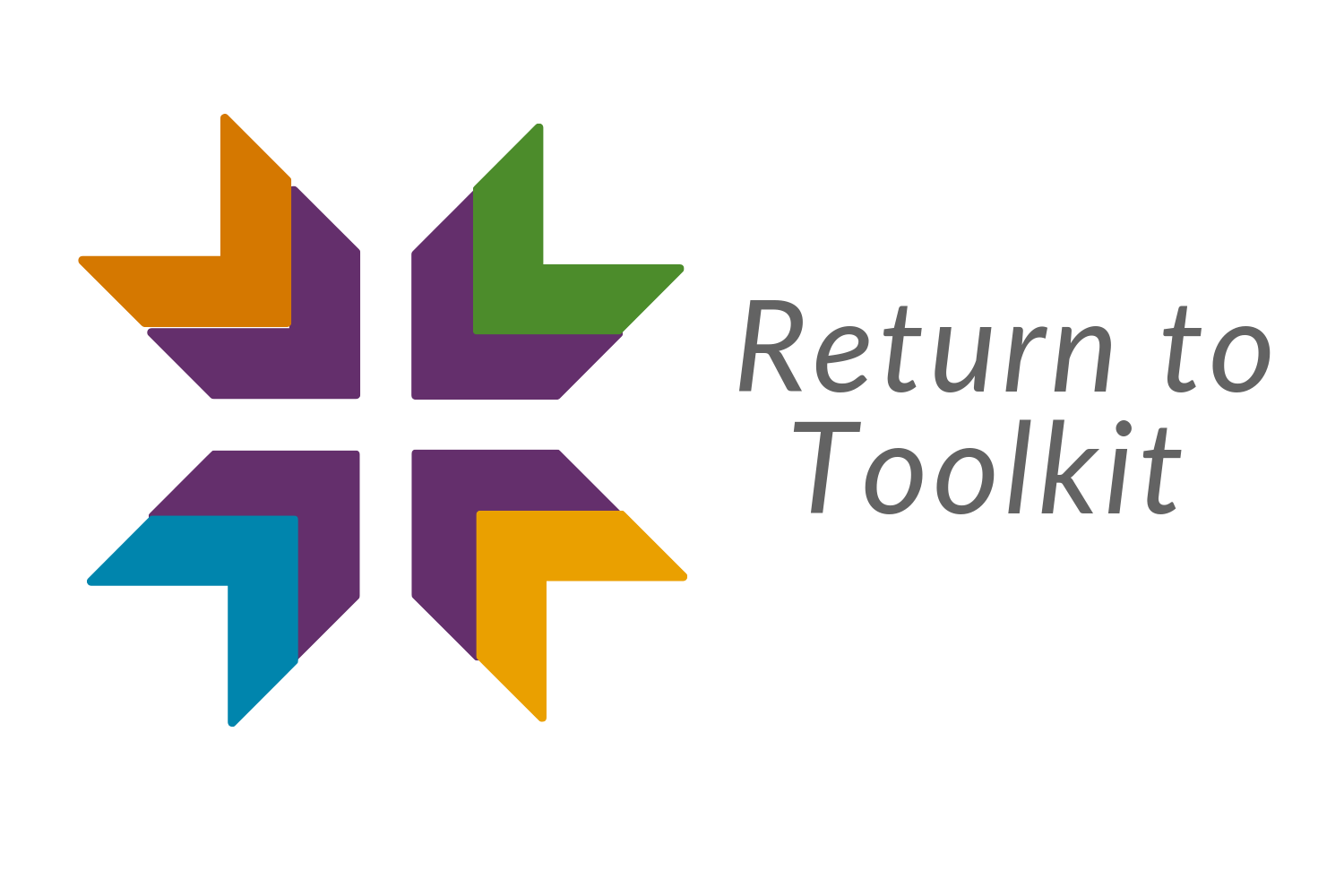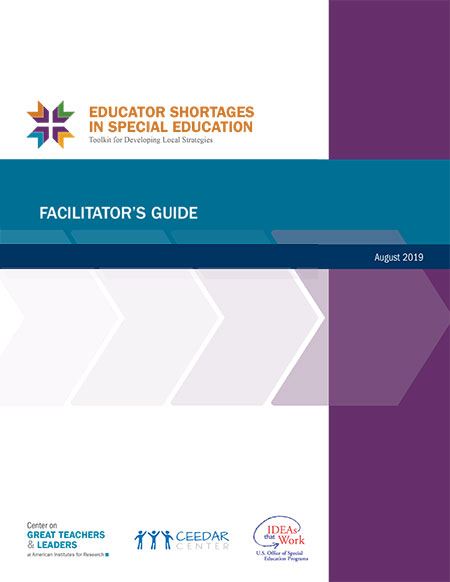Facilitation Guide

About the Guide
The Facilitator’s Guide to the Educator Shortages in Special Education: Toolkit for Developing Local Strategies is designed to lead state teams through a collaborative process to develop a comprehensive approach for addressing special education teacher shortages. This guide helps teams identify and implement a combination of short- and long-term educator talent management strategies to create comprehensive shortage solutions that address local context and needs.
Aligned with current efforts from the U.S. Department of Education’s Office of Special Education Programs, this process intentionally examines shortages across the entire career continuum—from attracting to preparing to retaining teachers—so that all students with disabilities have access to effective teachers.
Who Should Use the Guide
The Facilitator’s Guide is written for the leaders and facilitators of state teams charged with developing a comprehensive approach for addressing local special education teacher shortages. State teams should promote shared ownership, collective action, and joint accountability across the following partners:
- State education agency (SEA) personnel responsible for statewide educator talent management systems, data and monitoring systems, and educator preparation and accountability systems
- Regional education agency personnel responsible for building capacity across districts and regions within states
- Local education agency (LEA) or district personnel responsible for attracting, developing, and retaining effective special education teachers, including instructional leaders and human resources personnel
- Educator preparation program (EPP) personnel, including both traditional and alternative routes, responsible for preparing new special education teachers
How To Use the Guide?
The Facilitator’s Guide leads teams through a multi-stage process to consider both short and long-term strategies that contribute to a comprehensive approach to addressing special education teacher shortages. Each stage is anchored by an essential question and big ideas to help teams frame their thinking about special education teacher shortages.
Each stage is further divided into suggested action steps accompanied by recommended tools and resources and reflection questions for state teams. The recommended tools and resources provide state team leads and facilitators with in-depth facilitation guidance, implementation resources, and continuous improvement tools to help state teams carry out the suggested action steps.
Teams may need additional support from an experienced technical assistance facilitator to carry out the activities in this guide. States interested in support around this guide should contact the CEEDAR Center.



